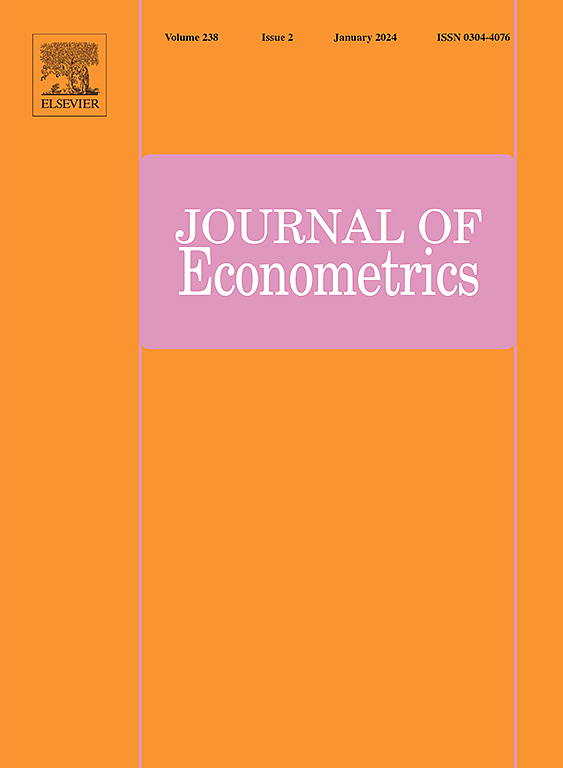通过杠杆效应识别波动风险价格
IF 9.9
3区 经济学
Q1 ECONOMICS
引用次数: 0
摘要
在随机波动率的资产定价模型中,波动率的不确定性通过对收益递减的厌恶和对波动率递增的厌恶两种渠道影响风险溢价。我们分析了衡量投资者对这些风险厌恶程度的结构参数的识别和稳健推理:回报风险价格和波动风险价格。在存在杠杆效应(资产收益与其波动率之间的瞬时因果关系)的情况下,我们仅使用价格数据研究这两个结构参数的识别,而不依赖于额外的期权定价模型或期权数据。我们在非参数离散时间指数仿射模型中分析了这一识别挑战,补充了Bandi和Renò(2016)的连续时间方法。然后,我们专门研究了一个参数模型,并推导了风险价格与资产收益和波动率联合分布之间的隐含最小距离准则。当杠杆效应很小时,这一标准几乎是平坦的,并且我们为两种风险价格引入了识别-稳健置信集,而不管杠杆效应的大小。本文章由计算机程序翻译,如有差异,请以英文原文为准。
Identifying the volatility risk price through the leverage effect
In asset pricing models with stochastic volatility, uncertainty about volatility affects risk premia through two channels: aversion to decreasing returns and aversion to increasing volatility. We analyze the identification of and robust inference for structural parameters measuring investors’ aversions to these risks: the return risk price and the volatility risk price. In the presence of a leverage effect (instantaneous causality between the asset return and its volatility), we study the identification of both structural parameters with the price data only, without relying on additional option pricing models or option data. We analyze this identification challenge in a nonparametric discrete-time exponentially affine model, complementing the continuous-time approach of Bandi and Renò (2016). We then specialize to a parametric model and derive the implied minimum distance criterion relating the risk prices to the asset return and volatility’s joint distribution. This criterion is almost flat when the leverage effect is small, and we introduce identification-robust confidence sets for both risk prices regardless of the magnitude of the leverage effect.
求助全文
通过发布文献求助,成功后即可免费获取论文全文。
去求助
来源期刊

Journal of Econometrics
社会科学-数学跨学科应用
CiteScore
8.60
自引率
1.60%
发文量
220
审稿时长
3-8 weeks
期刊介绍:
The Journal of Econometrics serves as an outlet for important, high quality, new research in both theoretical and applied econometrics. The scope of the Journal includes papers dealing with identification, estimation, testing, decision, and prediction issues encountered in economic research. Classical Bayesian statistics, and machine learning methods, are decidedly within the range of the Journal''s interests. The Annals of Econometrics is a supplement to the Journal of Econometrics.
 求助内容:
求助内容: 应助结果提醒方式:
应助结果提醒方式:


